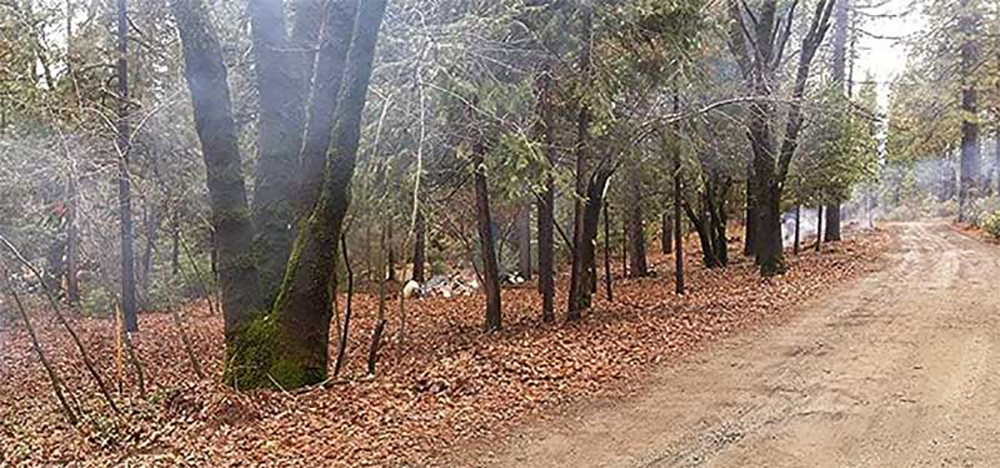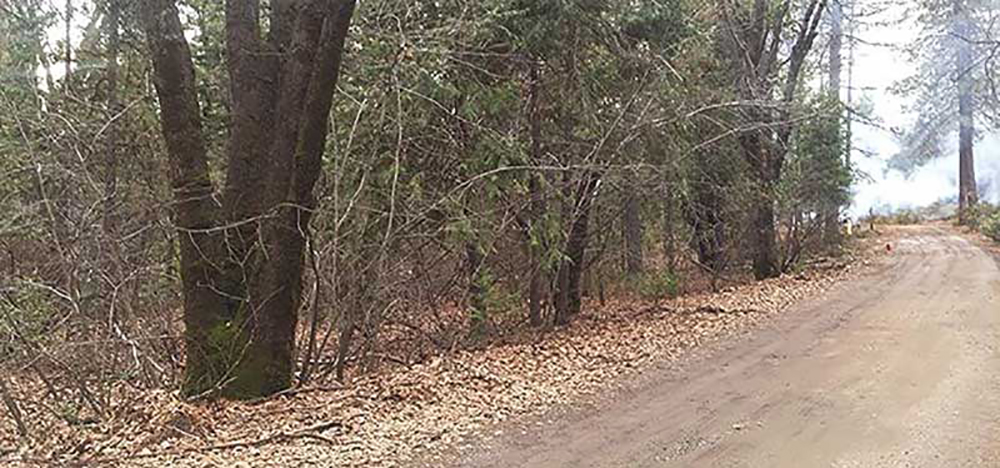Above: Forested area before thinning and control burn
By Holly Jorgensen and Stephen Graydon
The Sacramento River Watershed Program (SRWP) is partnering with the Terra Fuego Resource Foundation (Terra Fuego) to increase the pace and scale of forest restoration focusing on fuels and fire management as a nexus to watershed health.
California is a fire-adapted environment, which need managing to avoid the excessive fuels buildup that create mega fires. Fire suppression has created an unhealthy ecosystem that reduces ecological diversity, worsens the effects of a changing climate, and creates significant and lasting changes through disease, insects and mega fire. SRWP and Terra Fuego are partnering to develop the infrastructure, methodology and management practices to address the devastating impacts of drought and increase forest management efforts in the Sacramento River watershed.
SRWP’s Butte Forest Thin – Doe Mill Ridge Watershed Project uses forest thinning and low intensity prescribed fire to treat 227 acres of public land managed by the Bureau of Land Management (BLM) between Little Chico Creek and Butte Creek in the Sacramento River watershed. Our project will conduct pre- and post-monitoring to examine how pre-fire fuel reduction restoration treatments affect fire severity and improve forest health.

SRWP has been working with regional, state, and federal partners to address issues affecting the Sacramento River watershed. These issues include minimizing catastrophic fire, controlling and eradicating invasive species, and restoring habitat, and demonstrating the relationship between the landscape and management in upstream areas and impacts on the downstream water availability, quality, and inundation.
Thanks to recent efforts by the US Forest Service and Sierra Nevada Conservancy (SNC), there is a renewed awareness and support for efficient and larger landscape planning processes and development of coordinated, integrated, collaborative efforts to improve watershed health. There is also a growing understanding that many of our forests are unhealthy and overgrown forests are susceptible to disease and intense wildfire. Recently, state and federal agencies have formally acknowledged the need for periodic fire to reduce hazardous fuels and protect people and the environment from extreme fires.
In September 2016, the SNC Governing Board approved over $2 million in grants for projects that will reduce wildfire risk and restore forest and watershed health in the Sierra Nevada region, and included funding of our Project. Funding comes from Prop. 1: The Water Quality, Supply, and Infrastructure Improvement Act of 2014.
Our project uses an economic treatment that results in a large reduction in available fuels below a community. The thinning and the burn adjacent to the Forest Ranch community are the kind of steps we need to take to limit the risk from an intense wildfire during peak season. This is the kind of project that every foothill community wants, and it’s one that we plan on expanding to other communities.
Our project has community support and partners willing to contribute time and resources, covers habitat for threatened and endangered species, and leverages existing programs and projects. While the project area is only a tiny fraction of a landscape in need of major investment, its implications are far-reaching. The project will help to increase public awareness of the role forests play in protecting critical water supplies for humans and the environment, demonstrate and promote the role of fire as a natural and necessary element in fire-adapted environments, and garner support for the use of prescribed burns in future large-scale restoration projects.
Project partners include Firestorm Wildland Fire Suppression, Inc., BLM, California Conservation Corps, the Forest Ranch Fire Safe Council, and California State University, Chico.

